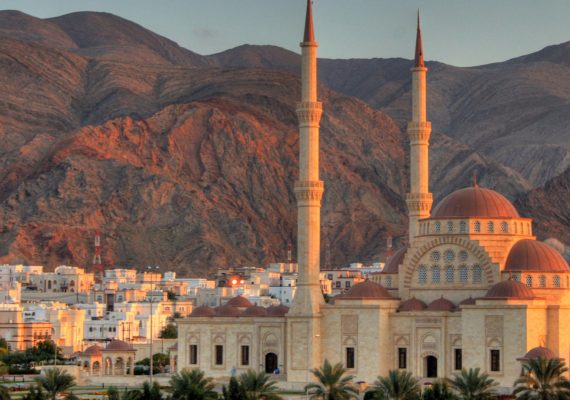is the capital of Oman. It is also the seat of government and largest city in the Governorate of Muscat. The metropolitan area spans approximately 1,500 km2 (580 sq mi) and includes six provinces called wilayats. Muscat attracted foreign tradesmen and settlers such as the Persians, the Balochsand Gujaratis. Since the ascension of Qaboos bin Said as Sultan of Oman in 1970, Muscat has experienced rapid infrastructural development that has led to the growth of a vibrant economy and a multi-ethnic society.The rocky Western Al Hajar Mountains dominate the landscape of Muscat. The city lies on the Arabian Sea along the Gulf of Oman and is in the proximity of the strategic Straits of Hormuz. Low-lying white buildings typify most of Muscat’s urban landscape, while the port-district of Muttrah, with its corniche and harbour, form the north-eastern periphery of the city. Muscat’s economy is dominated by trade, petroleum and porting.




